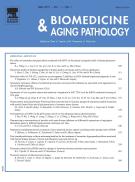Identification of novel cyanobacterial compounds for oral disease through in vitro and insilico approach - 13/08/14

Abstract |
In this research, we have conducted docking study to screen bioactive compounds from Microcystis aeruginosa and Phormidium corium. Among the two blue-green algal species were analyzed for chemical nature of bioactive substances using TLC and GC-MS methods. The antimicrobial compounds identified were phenolics, alkaloids, steroids. In the present study as reported that M. aeruginosa curde extract contained the bioactive compound Microginins, while Cyalobolide B was detected from P. corium. The phytochemical analysis of M. aeruginosa (Microginins), provided ethaneloic acid, Octanal, 3,7,11-Trimethyl-1,6,10-dodecatrien-3-ol (nerolidal), Monomethyl hydrazine and formic acid. The cumulative effect of these phytochemical provided more effective antimicrobial compound in inhibiting microbial growth. The phytochemical analysis of P. corium (Cyalobolide B) exhibited Ethaneloic acid, Dihydrodiplodialide, 3, 7, 11-Trimethyl-1, 6, 10-dodecatrien-3-ol (nerolidal), 1-Dodecanol, 1-Hexadecanol (CAS) and nanonic acid. These compounds together exhibited more effective antimicrobial substance in inhibiting microbial growth. Which members of a community interact with themselves as well as with different host structures and components of Candida albicans and Streptococcus mutans. The pathogenesis of this dental infection is a multi factorial process that results in a serious degenerative disease of the Oral candidiasis. In the present study SAP (secreted aspartyl proteinases in virulence and pathogenesis) is taken as a case study molecule to understand high reactive responses of various drugs administered for the oral candidiasis. The drugs are being compared with the SAP from C. albicans and SpaP (cell surface antigen SpaP gene) from S. mutans. The SAP and SpaP interacted with formic acid, nerolidal, octanol and nonanoic acid using docking methods. The exponentially increasing speed of computational methods makes a more extensive use in the early stages of drug discovery attractive if sufficient accuracy can be achieved.
El texto completo de este artículo está disponible en PDF.Keywords : Cyanobacteria, Bioactive compounds, Candidiasis, GC-MS, Docking, Oral diseases
Esquema
Vol 4 - N° 3
P. 223-228 - juillet 2014 Regresar al númeroBienvenido a EM-consulte, la referencia de los profesionales de la salud.
El acceso al texto completo de este artículo requiere una suscripción.
¿Ya suscrito a @@106933@@ revista ?

